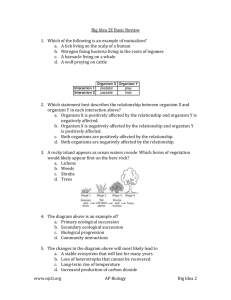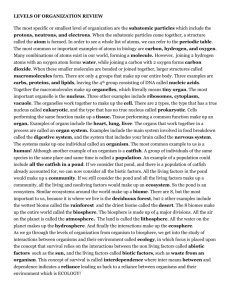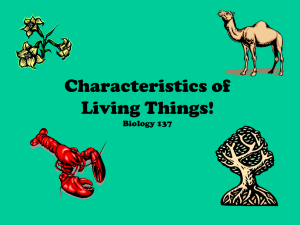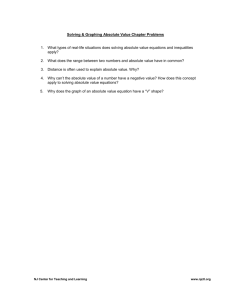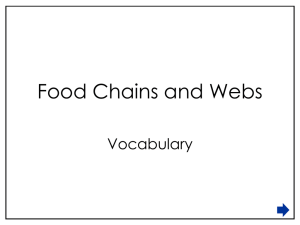Big Idea 2D Basic Review A dicot has Two embryos Two seed coats
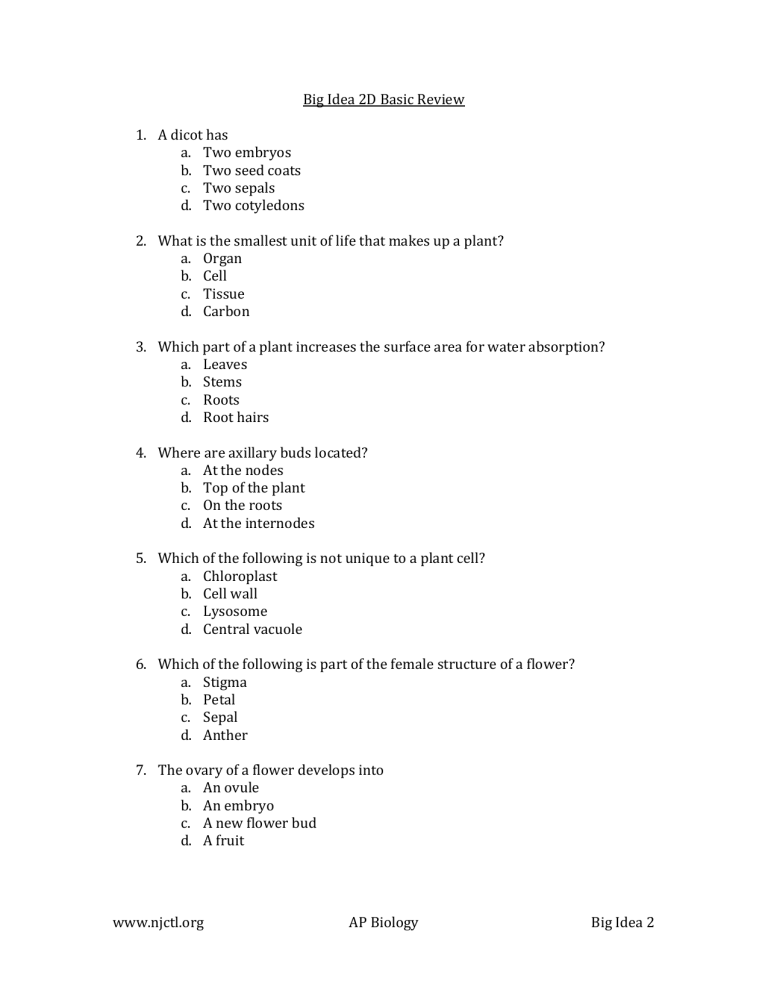
Big Idea 2D Basic Review
1.
A dicot has a.
Two embryos b.
Two seed coats c.
Two sepals d.
Two cotyledons
2.
What is the smallest unit of life that makes up a plant? a.
Organ b.
Cell c.
Tissue d.
Carbon
3.
Which part of a plant increases the surface area for water absorption? a.
Leaves b.
Stems c.
Roots d.
Root hairs
4.
Where are axillary buds located? a.
At the nodes b.
Top of the plant c.
On the roots d.
At the internodes
5.
Which of the following is not unique to a plant cell? a.
Chloroplast b.
Cell wall c.
Lysosome d.
Central vacuole
6.
Which of the following is part of the female structure of a flower? a.
Stigma b.
Petal c.
Sepal d.
Anther
7.
The ovary of a flower develops into a.
An ovule b.
An embryo c.
A new flower bud d.
A fruit www.njctl.org AP Biology Big Idea 2
8.
Foreign genes can be inserted into a plant cell and then cultured to produce a.
Genetically modified plants b.
Plants that never die c.
Clones of the original plant d.
Seeds
9.
Which of the following is not a function of the root system of plants? a.
Anchor the plant b.
Absorb minerals c.
Store food d.
Contain reproductive structures
10.
Which of the following best defines apical dominance? a.
Release of Auxin by the terminal bud, inhibiting growth of the lateral buds b.
Release of Auxin by the lateral buds, inhibiting growth of the terminal buds c.
Release of oxygen from the terminal buds, inhibiting CO
2
production of the lateral buds d.
Release of oxygen from the lateral buds, inhibiting CO
2
production of the terminal bud
11.
A stem modified for nutrient storage is called a a.
Stolon b.
Tuber c.
Tendril d.
Runner
12.
All of Earth's water, land, and atmosphere within which life exists is known as a a.
Population b.
Community c.
Biome d.
Biosphere
13.
All the plants, animals, fungi living in a pond make up a a.
Population b.
Community c.
Biome d.
Biosphere www.njctl.org AP Biology Big Idea 2
14.
A tree requires light, moisture, oxygen, carbon dioxide, and minerals to survive. This demonstrates that a living organism depends upon a.
Biotic factors b.
Abiotic factors c.
Symbiotic relationships d.
Competition
15.
Which of the following is a biotic factor in an ecosystem? a.
The amount of oxygen in the atmosphere b.
The climate of the region c.
The amount of annual precipitation d.
The types of carnivores
16.
Which pair of organisms would most likely compete for the same ecological niche? a.
Bacteria and fungi b.
Deer and wolf c.
Tree and fungi d.
Deer and bacteria
17.
A biome is characterized by its particular set of abiotic factors and a.
Average temperatures and precipitation b.
Specific geographic location c.
Distance from the equator d.
Characteristic ecological community
18.
Biomes near the equator tend to a.
Have warm average temperatures with little seasonal variation b.
Have colder average temperatures with little seasonal variation c.
Have variable temperatures based on the season d.
None of the above
19.
All of the following are factors that influence the climate within a biome
EXCEPT a.
Latitude b.
Altitude c.
Distance from the Sun d.
The greenhouse effect
20.
Which two biomes experience the least amount of precipitation? a.
Tropical rain forest and temperate grassland b.
Tropical savanna and tropical dry forest c.
Tundra and desert d.
Boreal forest and tundra www.njctl.org AP Biology Big Idea 2
21.
Which organism would most likely be found in the biome characterized by permafrost, cold temperatures, and little vegetation? a.
Polar bear b.
Moose c.
Iguana d.
Whitetail deer
22.
The photic zone of the Ocean a.
Extends to the bottom of the Ocean b.
Extends to a depth of about 200 meters c.
Is deep, cold, and permanently dark d.
Is where chemosynthetic bacteria are the only producers
23.
Ponds and lakes are examples of a.
Flowing-water ecosystems b.
Wetlands c.
Standing-water ecosystems d.
Estuaries
24.
Which statement best describes the relationship between organism X and organism Y in each interaction above? a.
Organism X is positively affected by the relationship and organism Y is negatively affected. b.
Organism X is negatively affected by the relationship and organism Y is positively affected. c.
Both organisms are positively affected by the relationship. d.
Both organisms are negatively affected by the relationship.
25.
Which set of terms best identifies the letters in the above diagram? a.
Photosynthesis, inorganic molecules, decomposition b.
Respiration, organic molecules, digestion c.
Photosynthesis, organic molecules, respiration d.
Respiration, inorganic molecules, photosynthesis www.njctl.org AP Biology Big Idea 2
26.
Autotrophs convert radiant energy into a.
Lipids b.
Proteins c.
Carbohydrates d.
Nucleic acids
27.
In the diagram above, which type of organism is most likely represented by letter X? a.
Decomposer b.
Producer c.
Autotroph d.
Herbivore
28.
Which of the following organisms would most likely be dependent upon other animals for food? a.
Primary consumers b.
Herbivores c.
Scavengers d.
Producers
29.
In the above food web a.
Minnows and fish are primary consumers b.
Algae is a decomposer c.
Fish and ducks are secondary consumers d.
Aquatic crustaceans are omnivores
30.
A scorpion stalks, kills, and then eats a spider. Based on its behavior, which ecological terms describe the scorpion? a.
Producer, herbivore, decomposer b.
Producer, carnivore, heterotroph c.
Predator, autotroph, herbivore d.
Predator, carnivore, consumer
31.
Removing all predators from an ecosystem would most likely result in a.
An increase in the number of higher order consumers b.
A decrease in the number of new predators moving c.
An increase in the amount of organic waste generated d.
An increase in the number of herbivores www.njctl.org AP Biology Big Idea 2
32.
Which type of information is represented in the above diagram? a.
The processes of respiration and photosynthesis b.
Transpiration and condensation within the water cycle c.
Decomposers releasing a material that is acted on by other organisms d.
Interactions between predators and prey
33.
All of the following are recycled in the biosphere EXCEPT a.
Water b.
Phosphorous c.
Nitrogen d.
Energy
34.
How is carbon stored in the biosphere? a.
In the atmosphere as carbon dioxide b.
Underground as fossil fuels and calcium carbonate rock c.
In plant and animal tissues d.
All of the above
35.
The repeated movement of water between Earth’s surface and the atmosphere is called a.
The water cycle b.
The condensation cycle c.
Evaporation d.
Precipitation
36.
Nitrogen fixation is carried out primarily by a.
Bacteria b.
Fungi c.
Plants d.
Soil www.njctl.org AP Biology Big Idea 2
24.
a
25.
c
26.
c
27.
a
28.
c
29.
c
30.
d
31.
d
16.
b
17.
d
18.
a
19.
c
20.
c
21.
a
22.
b
23.
c
Answers
1.
d
2.
b
3.
d
4.
a
5.
c
6.
a
7.
d
8.
a
9.
d
10.
a
11.
b
12.
d
13.
b
14.
b
15.
d
32.
c
33.
d
34.
d
35.
a
36.
a www.njctl.org AP Biology Big Idea 2
